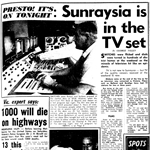 The Mildura district in north west Victoria was the last in the state to receive television.
The Mildura district in north west Victoria was the last in the state to receive television.
Like most other regional areas in the heavily populated eastern states, Mildura was to have two television stations — a national service from the ABC and a local commercial channel.
Plans to establish television in the region began as early as 1953, three years before television formally begun in Australia, when an initial application was made to the Australian Broadcasting Control Board for a commercial television broadcasting licence to service Mildura and the Sunraysia region — back then with a population of around 40,000. It wasn’t until over a decade later that the company, Sunraysia Television Limited, was successful in gaining a licence.
The company, with ties to Mildura’s Sunraysia Daily newspaper, established STV8 in Deakin Avenue at a cost of around £250,000. The cost for ABC to establish its local station was £531,000, including a transmitter at Yatpool and adding a network of microwave links from Swan Hill for the relay of the ABC program from Melbourne.
Both STV8 and ABC were to share transmission facilities at Yatpool.
Then the race was on as to who would be on the air first. In most regions it was the commercial station that was first to air, and this was meant to also be the case in Mildura. However a last minute delay in obtaining approval from the Australian Broadcasting Control Board saw STV8 have to postpone its official launch from its initial date of Saturday, 20 November 1965. The ABC station, ABMV4, therefore claimed the position of first TV station declared open in the region on Monday, 22 November 1965.
STV8 had managed to get its first test programs on the air by 20 November but, in a rare show of support to its opposition, opted not to screen any test films or programs on the Monday night so not to distract viewers from tuning in to the opening broadcast of ABMV4.
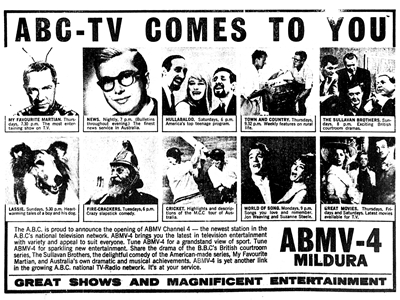
ABMV4’s opening day transmission kicked off at 3.55pm with children’s program Kindergarten Playtime. This was followed by direct telecast of the closing stages of the cricket match between Victoria and MCC from the Melbourne Cricket Ground.
Children’s programs and serials then led in to a special Mildura-based edition of Gerald Lyon‘s People series at 6.30pm. Regional news followed at 6.55pm ahead of the national news from Melbourne at 7.00pm.
British drama series The Sullavan Brothers at 7.30pm was then followed by the official opening ceremony of ABMV4 — with the station declared open by the local member for Mallee, Winton Turnbull. The opening presentation also included speeches by James Darling, Chairman of the ABC, and Councillor A R Burr, Mayor of Mildura.
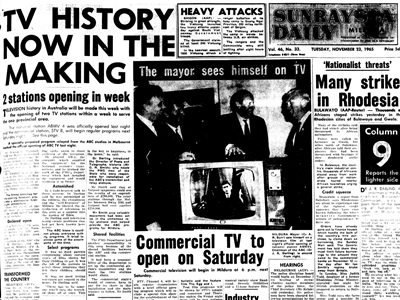
Programs later that evening included the BBC Comedy Playhouse and the documentary I, The Aboriginal — based on the award-winning book by former Mildura journalist Douglas Lockwood. The late national news was followed by a special 10-minute newsreel of events from Mildura before a half-hour broadcast of the Victorian Symphony Orchestra. The station closed transmission for the night at 10.50pm.
From the following day ABMV4 would follow the regular schedule of ABV2, Melbourne, with the only exception being the regional news at 6.55pm.
STV8 made its official debut on Saturday, 27 November at 6.00pm. The first program, The STV8 Story, featured the obligatory opening night speeches and included a filmed documentary on the development and construction of the new TV station. This was followed by American sitcoms McHale’s Navy and The Beverly Hillbillies. A Rolf Harris special was followed by crime drama Checkmate before the night’s feature film — the 1947 comedy The Egg And I.
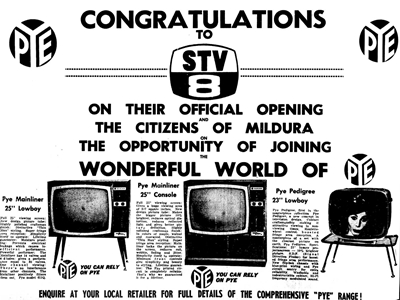
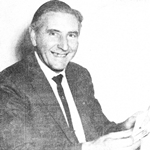 From the following night STV8 settled into regular programming, usually around three to four hours each evening. Like most Australian commercial stations at the time, STV8’s early line-up was predominately American, with regular titles including Superman, Woody Woodpecker, The Phil Silvers Show, The Munsters, Wagon Train, The Patty Duke Show, Rawhide, The Jackie Gleason Show, Bachelor Father and Jane Wyman Theatre. Australian-made programming included variety show Bandstand and quiz show Pick A Box. Local production included a weekday children’s session, a late night Christian epilogue and a weekly magazine program, Sunday Spotlight. The station relayed the 7.00pm news from ABC but followed this with a 10-minute local news bulletin each weeknight at 7.20pm. The channel also aired a five-minute news and weather summary at the close of transmission each weeknight. The local news, presented by the station’s program manager Ted Vardon (pictured), was sourced from the newsroom of the Sunraysia Daily newspaper.
From the following night STV8 settled into regular programming, usually around three to four hours each evening. Like most Australian commercial stations at the time, STV8’s early line-up was predominately American, with regular titles including Superman, Woody Woodpecker, The Phil Silvers Show, The Munsters, Wagon Train, The Patty Duke Show, Rawhide, The Jackie Gleason Show, Bachelor Father and Jane Wyman Theatre. Australian-made programming included variety show Bandstand and quiz show Pick A Box. Local production included a weekday children’s session, a late night Christian epilogue and a weekly magazine program, Sunday Spotlight. The station relayed the 7.00pm news from ABC but followed this with a 10-minute local news bulletin each weeknight at 7.20pm. The channel also aired a five-minute news and weather summary at the close of transmission each weeknight. The local news, presented by the station’s program manager Ted Vardon (pictured), was sourced from the newsroom of the Sunraysia Daily newspaper.
STV8 continued as Mildura’s sole commercial TV station, and its signal was known to be picked up from as far as the Riverland district in South Australia — a region that was not to get its own commercial station until 1976.
During the 1970s, STV8 formed an affiliation with BCV8 Bendigo and GLV10 (later GLV8) Gippsland. This partnership saw all three stations present a uniform program schedule, with each station continuing to produce their own local news programs.
The 1980s saw the three stations re-branded as Southern Cross TV8 and later the Southern Cross Network. By the end of the decade STV8’s parent company Sunraysia Television Limited had made a $95 million purchase of Perth television station STW9. The Perth station was required to be relinquished by businessman Alan Bond to comply with ownership restrictions. Bond in turn ended up buying STV8 from Sunraysia for $18 million, only to sell the station to ENT Limited, owner of VIC TV stations in Ballarat and Shepparton. STV8 thereby made the switch in affiliation from Southern Cross Network to VIC TV (now WIN) in January 1990.
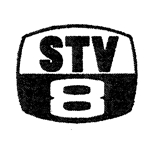 |
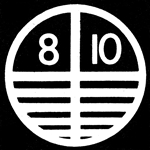 |
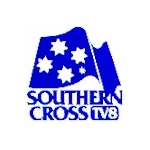 |
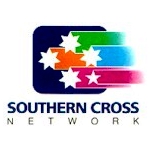 |
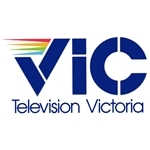 |
 |
 |
 |
Due to its small population and relative isolation from the rest of regional Victoria, Mildura was excluded from the government’s plan of aggregation of regional television, limiting local viewers to just STV8 and ABC while the rest of the state went on to have access to five channels. It was 1997 before a second commercial channel, Prime Television, was licenced to operate in Mildura — broadcasting as an affiliate of the Seven Network while WIN (STV8) screened programs from the Nine Network. The second national broadcaster SBS was expanded to the region also during the ‘90s.
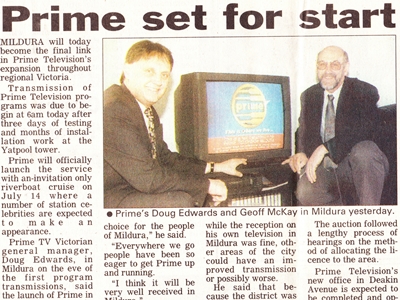
The advent of digital television saw Mildura adopt a third commercial service, Ten Mildura, operated as a joint venture between Prime and WIN. Ten Mildura was broadcast exclusively in digital as an affiliate of the Ten Network. The station would go on to re-broadcast Ten’s additional channels One and Eleven, as Prime and WIN would also relay the multi-channels of their capital city partners.
Mildura made Australian TV history in 2010 as the first region in Australia to switch off analogue television. The analogue signals of ABC, Prime, WIN and SBS were switched off at 9.00am on 30 June.
The occasion of 50 years of television in Mildura is perhaps not being met with much celebration. Viewers will no doubt be enjoying the growing choice of viewing options but that has come at the expense of local services. The widespread shrinking of regional television production has had a significant impact in Mildura. WIN, which was providing the only proper TV news bulletin in the region, has just recently closed its Deakin Avenue newsroom which dated back to the opening of STV8.
Source: Sunraysia Daily, 16 November 1965. Sunraysia Daily, 22 November 1965. Sunraysia Daily, 23 November 1965. TV Times, 24 November 1965. The Canberra Times, 11 March 1989.
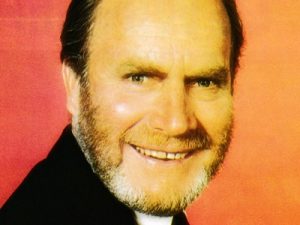
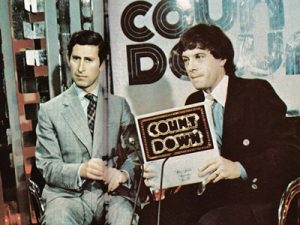
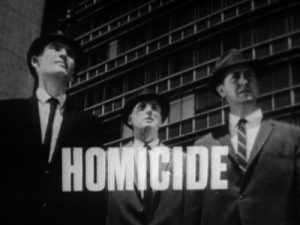
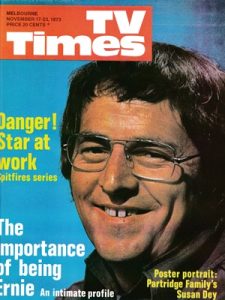
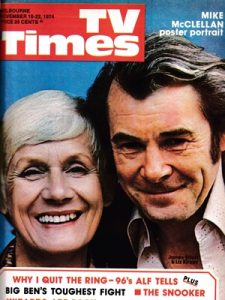

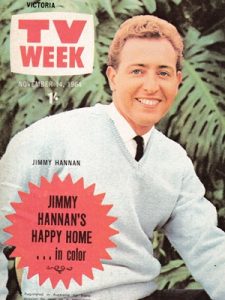
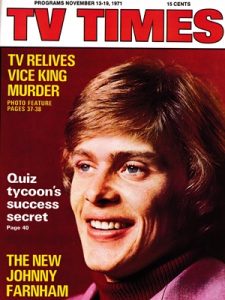
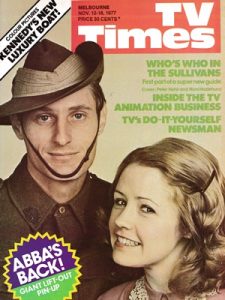
If a TV station changes affiliation in the analogue TV days, then there is no valid reason for it to change its channel allocation, Station GLV-Gippsland should’ve stayed on VHF Ch.10 as there was no valid reason to change(move down the band) to Ch.8. There was only one valid reason to move from one channel to another in the days of analogue TV and it only affected stations operating in VHF Band 2(Ch.3, 4 and 5) with the impending introduction of an FM radio station in the same region, this depended on which frequency the new station would use. If it was at the bottom of the band(88 to 92Mhz) a station using Ch.3 was required to shift to a UHF channel. If it was mid-band(93 to 100 Mhz) than a station using Ch.4 would be moved to UHF. If a frequency near the top of the FM band was to be used(101 to 108 Mhz) then a station using Ch.5 would be either bumped up to 5A or moved to UHF. The last-named event happened in Newcastle in 1976. Station ABHN-Newcastle was moved from Ch.5 to Ch.5A to make way for the impending introduction of the Newcastle University station, 2NUR-FM, which was still roughly two years away from launching but the channel-shift gave extra breathing space for those involved in setting up 2NUR. NBN Newcastle was supposed to move to UHF Ch.51 to fall in line with UHF channel allocations for this region with regional market aggregation requiring all Newcastle stations on UHF with SBS on 45, ABC on 48, NBN on 51, Prime on 54 and NRTV on 57, but NBN was the “fly in the ointment” refusing to give up its VHF channel(NBN should’ve been ordered to move or lose its licence) in 1993. Is that enough TV “history” for you?
I’m not sure what any of that had to do with Mildura. However to answer your point re: GLV10 they moved to Channel 8 because ATV0 wanted to take over the 10 frequency to address problems of poor reception of the 0 signal in parts of Melbourne. It was suspected that around 15% of Melbourne households could not pick up a clear signal on Channel 0 and this was costing the station viewers and revenue. Channel 10 as well as providing an improved signal was a logical alternative as it matched up with Channel 10 Sydney and very few other options were available on the VHF dial in Melbourne due to overlaps with regional stations etc.
@Andrew B. My point was that reallocation to another channel should be for technical reasons ONLY. No TV station, not even ATV should have been given a choice of channel. If it was free and didn’t interfere with nearby services, Ch.5A would’ve served ATV well as a channel to transmit their programmes. Ch.0 was proven useless in all regions and that’s why SBS shut down their VHF service on that channel as soon as they could. The channel was right at the bottom of VHF Band 1(45-52 Mhz). Ch.10(208-215 Mhz) was supplied as it was the only available channel that wasn’t in use by another station within 100 miles(imperial measured distance) of Melbourne. If Station GLV-Gippsland was further out than 100 miles from Melbourne, there would’ve been no need to change GLV’s output to Ch.8 as the distance between the two services would not have resulted in co-channel interference. If the authorities were concerned about co-channel problems then they should’ve given either Station ATV-Melbourne or Station GLV-Gippsland a UHF allocation. Again my point: Channel reallocation should only be done to overcome technical issues. It should never have been to put affiliates on the same frequency.
Your point about SBS vacating the VHF band is wrong. SBS was only allowed temporary (5-year) access to use that frequency to give viewers time to adapt to the UHF band.
Again, what does any of this have to do with Mildura which is what the article is about.
It was the connection(affiliation) between Station STV-Mildura, Station BCV-Bendigo and Station GLV-Gippsland, during the 1970s before market aggregation was even heard of. Why should GLV have changed its channel just to fit in with STV-Mildura and BCV-Bendigo? The affiliation is of the STATIONS in shared programming(and maybe advertising revenue). The channel, on which they transmit, is of absolutely no importance at all.
GLV did not change frequencies “just to fit in” with STV and BCV. It moved because ATV wanted access to use the 10 frequency for reasons already mentioned. For whatever reason Channel 8 was selected as the alternative for GLV which just happened to match up with its sister stations. Whether that was by coincidence or planned that way it doesn’t really matter it seemed to be a fairly successful move. No point in being outraged by it now especially as it’s all gone out the door anyway with aggregation, digital TV and other factors.
I was thinking that, if both ATV and GLV did a frequency-swap (like TVQ and DDQ did later on in 1988), it would’ve given GLV a greater advantage in covering the whole of Gippsland and even holding on to their “unofficial” audience in the outer-east areas of Melbourne due to Channel 0’s longer wavelength, whereas in inner-Melbourne (especially) the Channel 0 frequency would’ve been useless in terms of the reception. I used to get GLV quite well (if often with a little weaker picture) in Croydon where I used to live back in the 70s.
Not sure how well the 0 signal would have travelled around the Gippsland terrain. Melbourne is (mostly) flat so the signal itself would have travelled OK but the big problem was the lack of supporting antennas and interference caused by tall buildings blocking the signal.
Looking at the pye television advert the television in the middle must be last to be marketed in that format
I think you might be right. I think those style of sets were less common as the years went on although I do recall some colour models were similar to that.
Happy fifty years of television Mildura
Pakenham is right on edge of the of the Gippsland region so the Viewers have a multiple choice
As I’d stated, If Station GLV-Gippsland was more than 100 miles away from Melbourne, Station ATV-Melbourne could’ve moved to VHF Ch.10 without having to worry about co-channel interference. The two signals would’ve been too far apart. In any case, Station ATV-Melbourne should’ve been given whichever channel the authorities were to allocate them, they should not have been given the choice. A station DOES NOT own the channel on which it transmits. If Ch.10, then so be it. If another channel(say, Ch.5A), then ATV were stuck with it.
OK. You’ve made your point. I think we’ll leave it there.
cant make out the television brand under the heading prime set to start I think its NEC
Even looking at the original newspaper article I can’t make out the brand name. Maybe Panasonic?
yes looks like it when I first bought my UHF television back in 1991 with a Built in AV feature I was either going to buy a NEC or a Panasonic ended up with Akai brand
And on this their 50th Birthday – 27 November – HAPPY BIRTHDAY STV8!
It’s worth noting that, even with their involvement in the TV8 network in later years, STV8 stayed fiercely independent in terms of ownership. It Alan Bond and then Edmund Rouse hadn’t bought the station and Southern Cross got in first, STV8 would’ve been a great Ten affiliate though also carrying a few significant Seven and Nine programs and live events given that Mildura was declared ineligible for inclusion in aggregation.
Couple of things for Nei Forbes to consider
Firstly the Gippsland stations are only roughly 125 kilometres from the Melbourne transmitters and in my modern way of thinking that doesn`t equate to 100 miles….(Who actually uses miles nowadays anyway?)
Secondly if for example channel 0 in Melbourne moved to 5A in 80s a lot of the TV antenna manufacturers would have had to engineer antennas solely for the Melbourne market to accomodate channel 5A (pretty dumb) Even when 0 went to 10 there were some people that had problems as their old antennas were primarily cut to recieve 7 and 9 and would not pick up 10 or picked it up badly with shadowing or noise (I have seen this from personal experience from being an antenna installer since 1985) Hence in 1980 quite a lot of antennas were changed over for viewers to recieve channel 10.
Having grown up on Melbourne`s Mornington Peninsula channel 0`s reception from the ATV day to the SBS days was always full of interference from things like overhead power lines and also car without noise suppresors on their alternators so we never had a decent picture and it was never any other way.
As to what comments about channel allocation have to do with 50 years of STV8 is a little beyond me…
Nice to see it reach 50 years of broadcasting though.
Just wondering as well – was Mildura capable of picking up TV reception from out of service areas like Bendigo or Ballarat ? I do know Broken Hill in certain areas could recieve STV8 from Mildura up until they got their own TV station. I also remember seeing old Adelaide TV towers around Mildura in the earlly 70s as a child.
Any enlightenment ?
Hi Pete, thanks for your comment and for your insight.
Apparently Mildura residents keen enough to receive TV before 1965 had to try for distant reception from places like Adelaide. I wonder if perhaps the terrain was more conducive for trying to receive Adelaide as opposed to centres like Bendigo. Just a guess as I’m not familiar with the geography around Mildura.
Yes Andrew, I did see an old ADS7 B&T ad once (published back in the mid-60s) which had a map of South Australia and some info of how the station boasted about being received throughout much of SA and even in certain pockets along the SA border, including Mildura and also Wentworth and Horsham (believe it or not).
It was at times possible to pick up Adelaide stations in Mildura. I’m not aware of Bendigo reception, but it may have been possible too. Ballarat is further away.
Bendigo and Adelaide are the same distance from Mildura, but I believe Adelaide’s transmitters had higher power. I don’t know what the emission patterns or reflecting affects of nearby mountain were.
As I comment before but never mention it’s location distance wise the the satilite town of pakenham is 30km east of Melbourne so I would have two choices of viewing
STV 8 was one of only a few stations across Australia that had freedom to Insert their own local content, I was born & raised In Melbourne & I would often look at the regional TV guide & STV would always put In their own content & It wasn’t rare. My highlight was when I was 17 I travelled up to Mildura & I got to have a look around the STV 8 studios.
Even In the early 90’s the station was a hub of activity & It was a disgrace that they stopped producing & presenting local news from the studio, It was a shock & very sad day when we lost our local news service altogether It’s a sad demise of what was once a great station. If only I had the money I’d buy STV 8 I’d bring the station back to what It once was & treat It with the respect It deserves.
Wouldn’t we all Clem?
My TV career started at STV8 on the morning of the opening date 22 Nov 1965. Leo Bennedict was film manager and showed me how to splice commercials into the films for that night. Then how to thread up projectors, insert slides & change captions. Program Manager Ted Vardon showed me how to operate the boom microphone for Max Foley to do his opening speech then whilst Chief Engineer Alex Stewart operated the vision switcher and Assistant Chief Engineer Bruce Batterham drove Audio, I had to rush from the studio to Telecine to roll the first film on air.
Two years later I joined HSV7 as an engineer. We converted equipment to color and did the first color demonstrations at the Melbourne Show in 1968. In 1970 the Oz Govt deferred color so I worked at IBA in UK gaining great experience with color equipment. When the green light returned for Oz color I returned to HSV7 to complete the transformation for color introduction on 1 March 1975.
Since then we have built studios and converted to digital. We have provided technical facilities for all types of TV shows.
Several ownership changes later, I am nearing retirement after 55 years since those humble beginnings at STV8.
Hi John thank you for the message. Lovely to read of your experience. Wishing you all the best for your approaching retirement.